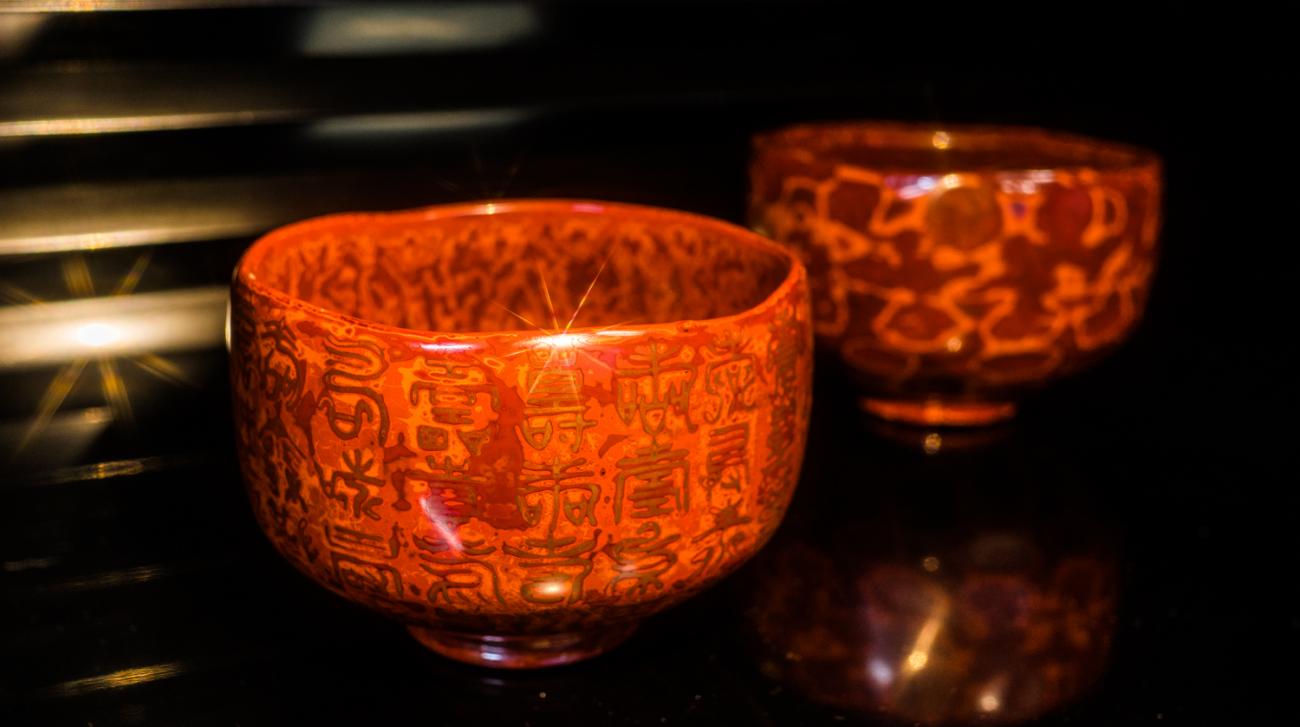
A Testament to Effort and Precision
The adage, "A cup of tea requires the efforts of a hundred people, and a screen requires the efforts of ten thousand people," encapsulates the laborious process of creating lacquerware. Originating from the sap of lacquer trees, this natural substance undergoes a meticulous transformation, combining ancient techniques with the dedication of skilled craftsmen. Each brushstroke contributes to a vibrant tapestry that has endured the test of time.
Even the smallest lacquered object, such as a cup, symbolizes immense effort. As described in the "Salt and Iron Theory" by Huan Kuan of the Western Han Dynasty, lacquer production demanded the labor of hundreds. This painstaking process reflects the hidden struggles behind its shining glory.

The Multifaceted Utility of Lacquer
|
Lacquerware transcends aesthetics. It enhances the longevity of objects, offering durability and vibrancy. Beyond its anti-corrosion and wear-resistant properties, lacquer’s elasticity makes it ideal for musical instruments, amplifying sound resonance. Over time, the lacquer surface develops unique cracks, such as flowing water, plum blossom, or cow hair cracks, each adding character and elegance to the piece. |
Vietnamese lacquer tree - Japanese lacquer tree- Thailand lacquer tree |
This resilience and adaptability stem from the natural origins of lacquer, derived from trees that collect the essence of nature. This organic connection imbues each item with life, creating art that is as timeless as it is functional.
A Flourishing Era: Lacquerware in the Warring States Period
The Warring States period marked the golden age of lacquerware, particularly in the Chu State. Characterized by intricate carvings and vivid paintings, Chu lacquerware reflects the grandeur of its time. With red as the dominant color, these pieces radiate an aristocratic elegance.

One iconic example is the "Travel of Carriages and Horses", where detailed patterns and vibrant pigments create a vivid, three-dimensional effect. The artistry of Chu lacquerware lies in its ability to blend imagination with technical mastery, capturing the cultural spirit of its people.
Han Dynasty: The Pinnacle of Lacquer Culture
The Han Dynasty elevated lacquerware to new heights, blending artistry with practicality. This period emphasized luxury and refinement, as seen in the extravagant burial practices of the time. Lacquerware was not just a utilitarian object; it was a medium for expressing devotion to gods and ancestors, as well as a celebration of life.

Artifacts such as lacquer ear cups from Mawangdui exemplify this grandeur. Adorned with patterns of clouds, dragons, and phoenixes, these items often bore inscriptions like "Jun Xing Jiu" (Drink more wine) to encourage conviviality. The Han people’s passion for drinking and celebration infused their lacquerware with cultural significance and artistic innovation.

Lacquer: A Symbol of Unity and Transformation
Lacquer and glue, inseparable in the production process, symbolize enduring bonds. This union reflects not only the technical aspects of lacquerware but also the societal values of the Han Dynasty. Lacquerware workshops flourished, working tirelessly to meet the demands for elegant and durable pieces, embodying a blend of artistry and practicality.

Unlike the cold, metallic sheen of bronze, lacquerware offered warmth, lightness, and vibrancy. Its evolution marked a shift in artistic expression from three-dimensional sculpting to two-dimensional design, enabling intricate patterns and vivid imagery to come to life.
Legacy Through Time
The life of lacquerware is a dialogue between material and time. Each piece encapsulates the culture, artistry, and innovation of its era. Thousands of years later, these artifacts still radiate the glory of their past, reminding us of the craftsmanship and creativity that brought them to life.

The journey of lacquer culture, from its primitive beginnings to its flourishing under the Han Dynasty, reflects the intersection of tradition, innovation, and enduring beauty. Whether as a functional object or a work of art, lacquerware continues to captivate, preserving its legacy as a testament to human ingenuity and timeless elegance.

The News 25/12/2025
Walking by Ba Son at night and seeing the sky like "turning on the screen"? It is highly likely that you have just met Saigon Marina International Financial Centre (Saigon Marina IFC) – a 55-storey tower at No. 2 Ton Duc Thang (District 1). The façade LED system makes the building look like a giant "LED Matrix": standing far away, you feel like the whole tower is broadcasting content, constantly changing scenes according to the script.

The News 14/12/2025
Architectural Digest gợi ý Cloud Dancer phù hợp với plush fabrics và những hình khối “mềm”, tránh cảm giác cứng/rigid; họ liên hệ nó với cảm giác “weightless fullness” (nhẹ nhưng đầy) [3]. Đây là cơ hội cho các dòng vải bọc, rèm, thảm, bedding: màu trắng ngà làm nổi sợi dệt và tạo cảm giác chạm “ấm”.Pantone has announced the PANTONE 11-4201 Cloud Dancer as the Color of the Year 2026: a "buoyant" and balanced white, described as a whisper of peace in the midst of a noisy world. This is also the first time Pantone has chosen a white color since the "Color of the Year" program began in 1999. Pantone calls Cloud Dancer a "lofty/billowy" white tone that has a relaxing feel, giving the mind more space to create and innovate [1].

The News 04/12/2025
The Netherlands is one of the most vulnerable countries to climate change, with about a third of its area lying below sea level and the rest regularly at risk of flooding. As sea levels are forecast to continue to rise and extreme rains increase, the government is not only strengthening dikes and tidal culverts, but also testing new adaptation models. Floating housing in Amsterdam – typically the Waterbuurt and Schoonschip districts – is seen as "urban laboratories" for a new way of living: not only fighting floods, but actively living with water. In parallel with climate pressures, Amsterdam faces a shortage of housing and scarce land funds. The expansion of the city to the water helps solve two problems at the same time: increasing the supply of housing without encroaching on more land, and at the same time testing an urban model that is able to adapt to flooding and sea level rise.

The News 20/11/2025
Kampung Admiralty - the project that won the "Building of the Year 2018" award at the World Architecture Festival - is a clear demonstration of smart tropical green architecture. With a three-storey "club sandwich" design, a natural ventilation system that saves 13% of cooling energy, and a 125% greening rate, this project opens up many valuable lessons for Vietnamese urban projects in the context of climate change.

The News 10/11/2025
In the midst of the hustle and bustle of urban life, many Vietnamese families are looking for a different living space – where they can enjoy modernity without being far from nature. Tropical Modern villa architecture is the perfect answer to this need. Not only an aesthetic trend, this is also a smart design philosophy, harmoniously combining technology, local materials and Vietnam's typical tropical climate.

The News 25/10/2025
Hemp-lime (hempcrete) is a non-load-bearing covering material consisting of a hemp wood core (hemp shiv/hurd) combined with a lime-based adhesive, outstanding for its insulation – moisture conditioning – indoor environmental durability; in particular, IRC 2024 – Appendix BL has established a normative line applicable to low-rise housing, strengthening the technical-legal feasibility of this biomaterial.